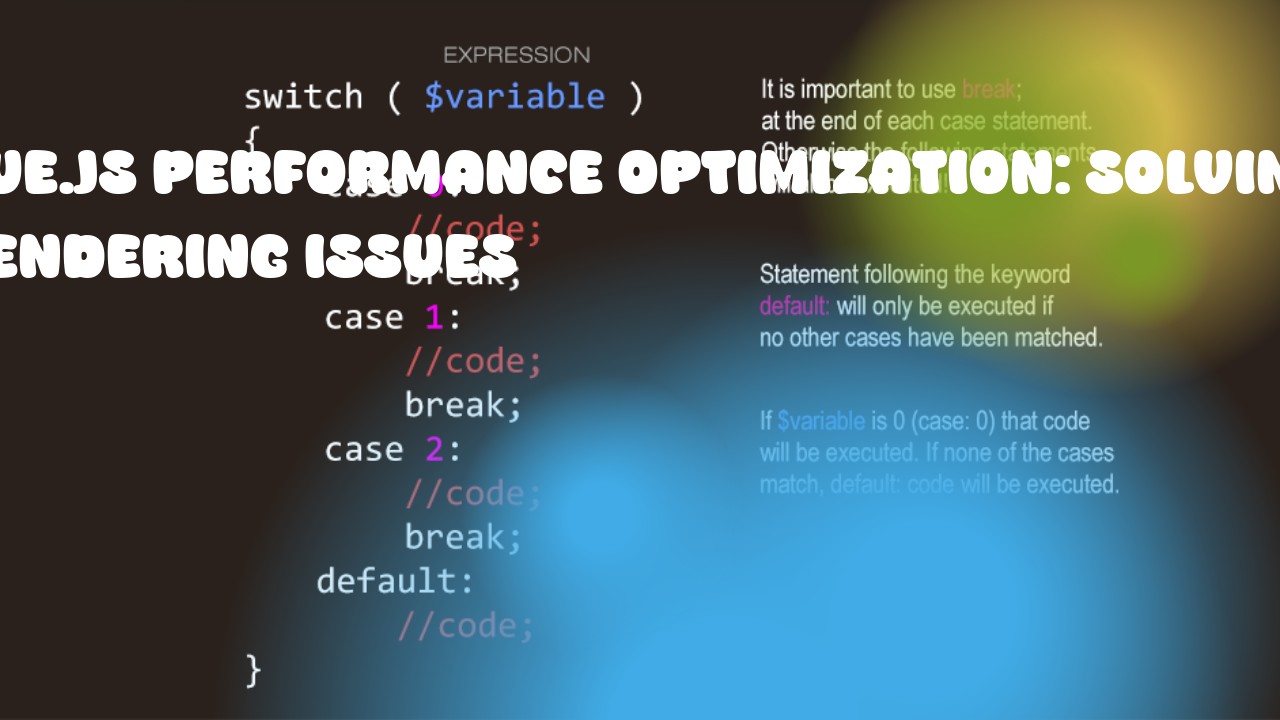In Vue.js, rendering performance can be an issue if not properly managed. Here's how you can solve common rendering issues in Vue.js applications:
-
Lazy Loading - Use lazy loading to defer the loading of heavy components or resources until they are needed. This will significantly improve the initial load time and increase perceived performance.
-
Use Computed Properties - Instead of using methods, use computed properties for complex calculations that do not change frequently. Vue.js caches the results of computed properties, so if a value has been calculated before, it will be retrieved from cache instead of recalculating.
computed: {
fullName() {
return this.firstName + ' ' + this.lastName;
}
},
-
Use Watchers - Use watchers when you want to perform an action whenever a value changes, but not necessarily in response to user input. For example, you might want to fetch data or update other parts of the application when
achanges.
watch: {
A(newValue, oldValue) {
// Perform some actions based on A's new value
}
},
-
Use Vuex for Global State Management - When dealing with complex applications that involve many interconnected components, it's important to manage your application's state in a centralized way using Vuex. This can help you avoid prop drilling and make it easier to debug and maintain your code.
-
Avoid Using Deep Dependencies - If A depends on B, and B depends on C, use A directly, not indirectly through B. In other words, avoid deeply nested data structures where changes in one part of the structure can have cascading effects elsewhere.
-
Use Lazy Loaded Components - Use
<component>with a component tag to lazily load components that are only needed when they are first viewed by the user. This reduces initial page loading time and improves performance for slow networks or mobile devices. -
Avoid Computed Properties for Side Effects - Computed properties should not have side effects, such as modifying data outside of the component scope or performing asynchronous operations. Instead, use methods for such functionality.
-
Vue.js Lifecycle Hooks - Make sure to avoid doing heavy computations in lifecycle hooks such as
mounted,updatedandbeforeDestroy. These should only be used for side effects like interacting with the DOM or making HTTP requests. -
Use Vue.js's In-built Performance Tools - Vue.js provides several performance tools to help you identify potential bottlenecks in your application. Use
performance.mark()andperformance.measure()to measure specific parts of your code, or use the browser's built-in developer tools to analyze the performance of your components.
Remember, performance is not just about loading time but also about how fast the user can interact with your application. So, always test your application on a variety of devices and network conditions to ensure that it performs well across all platforms.

